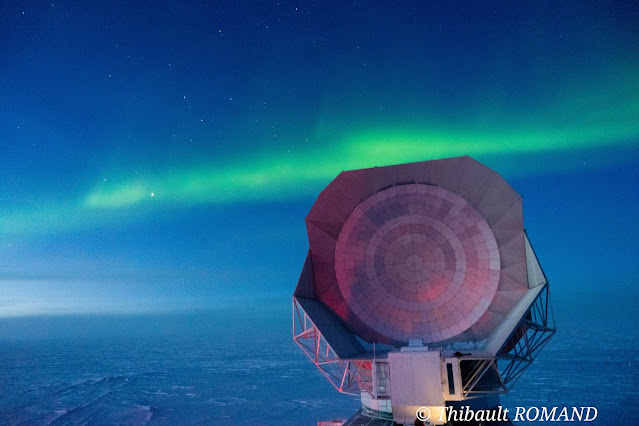Born in Grenoble, I grew up in a small mountain village in the heart of the French Alps. My name is Thibault Romand, and here's my early scientist career story, from France to the South Pole.
After receiving my high school diploma from the small mountain village where I grew up, I came down to the closest big city, Grenoble, to continue my studies. I did a Bachelor's degree in "physical measurements", in two years. I did my end-of-Bachelor internship at CEA Grenoble, in the "Low Temperatures Department", and more specifically in the "Space Cryogenics Laboratory". I worked on small-scale space refrigerators and discovered a passion for cryogenics.
I then decided to pursue my studies at an engineering school, leading to a Master's degree. I went to Saint-Etienne (still in France) at ISTP, which is a work-study school, meaning I spent half of the time learning things at school and the other half working in a company. As I loved my end-of-Bachelor internship experience, I decided to stay at CEA Grenoble for another 3 years. I was learning industrial engineering techniques at school while still working on my space fridges at CEA. At the end of this program, I had to do an internship abroad to obtain my Master's degree.
The "Observational Cosmology" group at Caltech, CA, USA, led by Prof. Jamie Bock, has a long-term partnership with the low temperatures department of CEA Grenoble, France. I decided to contact Prof. Bock, who proposed me an internship at Caltech. I arrived to the US in June 2022 to implement a fridge I was developing at CEA on a testbed at Caltech. This fridge (called Adiabatic Demagnetization Refrigerator) could reach temperatures as low as tens of millikelvin (a fraction of the absolute zero).
I really liked my experience at Caltech, but I had to return to France to defend my Master's thesis in September 2022. After that, I considered pursuing my studies with a PhD, but Prof. Bock offered me a research position in his lab, which I accepted. I went back to Caltech in January 2023 for a two-year contract with the Observational Cosmology group. I mainly worked on cryogenics (with the fridge I brought from France), but Prof. Bock also introduced me to
CMB detectors. These extremely sensitive detectors, called Transition Edge Sensors, were made nearby, at NASA JPL. My role was to characterize their ability to detect faint Cosmic Microwave Background polarization using a testbed in the Caltech laboratory.
The ultimate goal was to deploy these detectors in a telescope at the South Pole in Antarctica. This telescope, called the
BICEP Array, is administered by a collaboration between 4 universities in the US: Caltech, Harvard, Stanford, and Minnesota. I realized that every year during the Austral summer (the winter in the Northern Hemisphere), people were going to the South Pole to upgrade this telescope. Even crazier, some were staying over the long polar night to take care of it while observing the sky during the Austral winter. These people are called "winter-overs" and are very few.

Since my young age, I've always wanted to be an explorer. I liked living for weeks with the bare minimum and hiking in the most remote places of the mountains surrounding my parent's house. I need to challenge myself to feel alive. When I discovered the winter-over position at the South Pole, I immediately applied. After a few months of recruiting and training process, I was selected to be the 2024 BICEP Array Winter-over researcher. What a blast!

In October 2023, I went to Colorado to be trained in medical response and met the other winter-overs who will be confined with me during the whole winter. I left for Antarctica shortly after. The first gate is Christchurch, New Zealand. From there, I took an Air Force plane to join the Ice Continent, at McMurdo Station, on the coast. After a few days waiting there, I took another Air Force plane to enter the middle of this continent, the South Pole. I landed at the American Amundsen-Scott South Pole Station on November 16th, 2023. I spent a very busy Austral summer doing upgrades on the telescope with the summer team.
In February 2024, most of the people left the station and the telescopes in the hands of the 41 winter-overs. I'm now taking care of the BICEP Array telescope, which is taking data with the detectors I tested a few months ago at Caltech!
By the end of March, the sun has settled and will not return before September. The long austral night is ahead of us. It is waiting for us to showcase its auroras and uniquely starry sky, and to test if we can survive the most intense cold on Earth!
Thibault Romand
https://www.instagram.com/full_frame_thibault/







Comments
Post a Comment